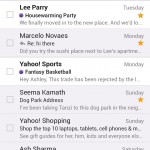

Watching the Instagram story unfold this week, you’d be hard-pressed to find what’s funnier – outraged users threatening to delete their accounts or company executives squirming at the unexpected backlash and back-tracking on their original terms.
National Geographic threatened to close its account. Kim Kardashian said she was reviewing the terms, reported the BBC. Many others are not applying the image filters anymore.
In truth, both users and the company are denying reality when they set on this collision course. And if you’ve seen how the Internet works, things will be back to normal in time.
At the worst, hipsters may try looking for other similar photo filters for their holiday, fruit cake or dog, while new companies will spring up to take Instagram’s place should its reputation not recover from this debacle.
The reason is simple. There’s no free lunch, folks. It’s a concept everyone understands, but something nobody accepts, in an age where such wonderful services like Instagram, Facebook and Gmail are free.
Well, who pays for the thousands of servers that store and distribute all the office e-mail, birthday photos and those status updates about your new hair cut? You, the user, pay in an indirect way, of course.
Facebook and Gmail have taken one of the oldest business models around. They create a great meeting place or system for people to get in touch and then charge the hell out of the eyeballs that advertisers want to reach. Facebook has “sponsored” posts while Google serves up ads that target what you seem to be interested in.
Indeed, newspapers may be dead or dying, but their old business model is still pretty much intact, just updated to provide better value and accountability by these new media outlets. To test the naivety of the average user, ask around how many readers know that the dollar they pay for the newspaper doesn’t even cover the cost of the paper itself, never mind the salaries of reporters.
This same naivety has brought about some of the knee-jerk reactions to cut off Instagram accounts this week.
Sure, it tried to go a step further than anyone else, by wanting to sell pictures of your baby, boyfriend or cat for a profit. By ignoring users’ privacy and intellectual property rights, it has clearly crossed a line, and as a result of the backlash, has to promise it won’t be naughty again.
But what was Instagram going to do? It had been bought by Facebook just months ago for a cool US$1 billion and someone had to start paying for things. It’s good that it was called out for its unacceptable new terms. But don’t be surprised if it starts introducing ads or some other indirect charging model in future.
And that’s the rub. Can users stop using a free service and start paying? Nope, the majority would still prefer free and some weeks down the road, probably forget about these privacy issues. Maybe Instagram will soften its stance or another player – remember Flickr? – will come forward more. But nothing will change much, as long as people don’t want to pay.
Other models may come along as well. But ultimately, only two have made sense so far. One is “freemium”, where you pay for additional or “pro” features, as you see often in mobile phone apps. The other is to push ads out to an audience enjoying a free service, as proven by news media outlets and new media such as Google and Facebook.
Either way, there’s no free lunch. If nothing else changes, hopefully users will have learnt and accepted that.






